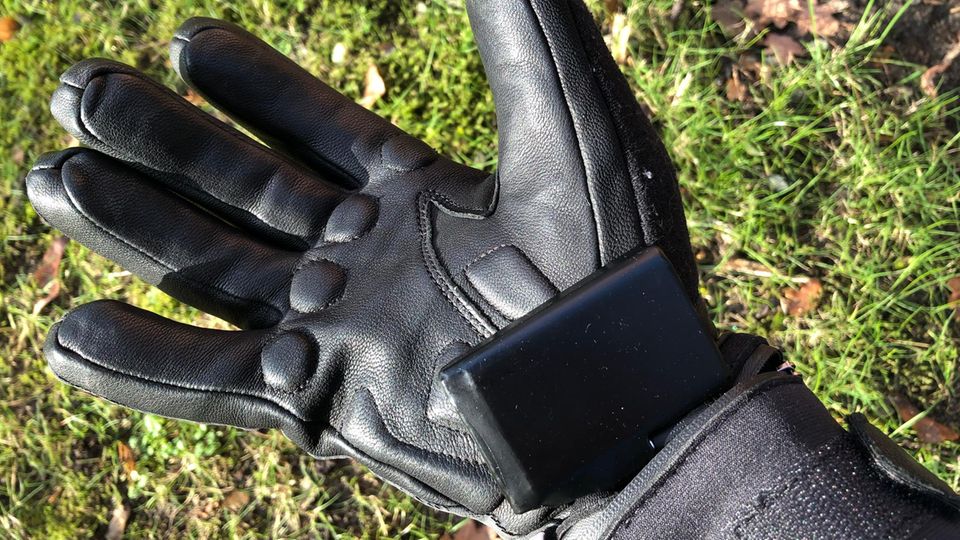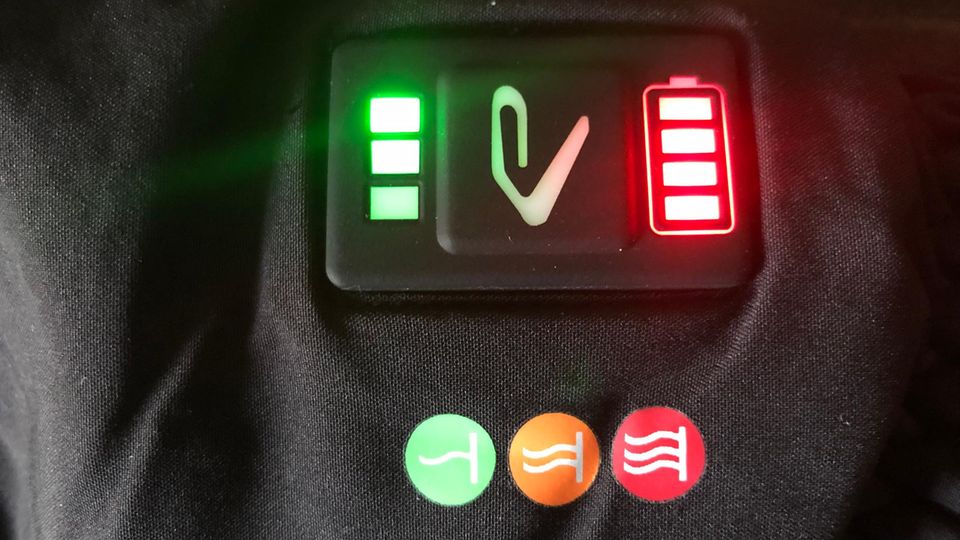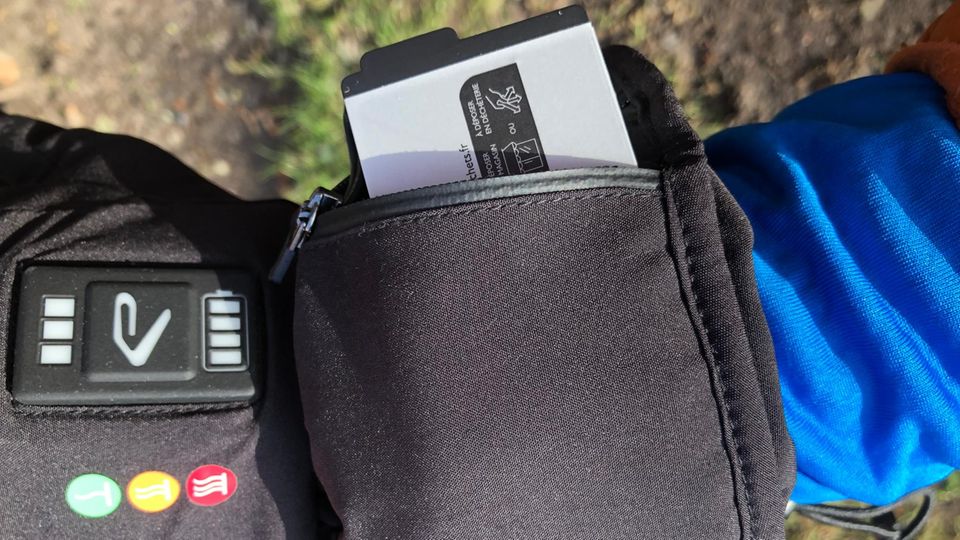Cycling in winter
Heated gloves: the models of Sealskinz and Ekoi in comparison
Unfortunately, even the thickest gloves reach their limits in icy minus degrees. Ever heard of heated gloves? The star tested two models.
Even if the very big snowfall is still a long time coming in many ski areas: millions of Germans look forward to their winter vacation. And before it starts, it is worth taking a look into the wardrobe. Fits. No longer fits. Fits. No longer likes. A small inventory makes sense in any case so that there is still some time to dress up for the ski holidays. Anyone who has still not found the ultimate winter gloves against cold hands despite a long search and many tests is the place for you. Heating gloves should keep your fingers warm when cycling in winter, but also on your skiing holiday. But how does it work? And how quickly the batteries make it limp? Is the good old one In the end, the better heating for on the go? We snapped two models for a test.
Sealskinz vs. Ekoi: The first impression
At first glance he comes A little sportier and bike more suitable. The In contrast, it would also go through as a ski glove. This is mainly due to the spacious shaft, which can even be lashed with a rubber cord on the forearm. That has some advantages. But more about that later. Sealskinz dispenses with the spreading shaft, which looks a bit more elegant. To do this, the palms and fingers were donated to soft leather. The rest also makes a high -quality impression. The glove should be 100% waterproof. Ekoi leaves the leather away. Here, a pad that sewn and rubberized on the hand plate is to improve the grip on the handlebar (or ski rock).
The manufacturers have placed the most important feature of the two test products in the middle of the thumb on the caps. Sealskinz ‘heating button is designed a little more discreetly. In addition to a printed colored legend in green, orange and red and corresponding LEDs, Ekoi also scores with a charging state display. At the competitor, the lamps in all heating levels shine red. Sometimes: The number of bright beams indicates the set heating level.
Both gloves are delivered with two separately packaged batteries each. The packs of Ekoi (65x42x15 mm) are gray, angular and chunkier than the somewhat flatter energy storage from Sealskinz (60x47x13 mm). The chargers are also included. At EKOI, the power supply is included with a connector. Sealskinz only places the two-part cable with the 2.5 millimeter jack. The right adapter should now be found in every household. Nice: Both are equipped with an LED that glows green as soon as the batteries are fully charged. This took a few hours with the apparently only partially loaded batteries of the test models. Only then were they ready for use.
Ekoi vs. Sealskinz: The most important information at an overview
| Ekoi Heat Concept 5 | Sealskinz Heated Cycle Glove | |
| Area of application | MTB, racing bike, winter sports | Cycling |
| material |
Upper side: 94% polyamide, 6% Elasthan Inside: 100% polyester |
Outside: 50% leather, 46% polyester, 4% Elasthan Inside: 92% polyester, 8% aluminum |
| Weight/couple |
including batteries: 353 g Without batteries: 187 g |
including batteries: 379 g Without batteries: 228 g |
| Sizes | S, M, LXL | S, s, ML, XL |
| Waterproof | Yes | Yes |
| Touchscreen compatible | no | no |
| Heating levels | 3 (30/35/40 degrees Celsius) | 3 |
| Battery | 2 (á 2200 Ah / 7.4 V) | 2 (á 2200 Ah / 7.4 V) |
| Battery term according to the manufacturer | 1.5-4 hours (depending on the heating level) | 5-6 hours |
| Charging status indicator | Yes | no |
| Charging time (according to the manufacturer) | 2-4 hours | not specified |
Practical test: insert battery
First of all: Both tested glove couples can be conveniently carried without a battery. We tried them on the bike at temperatures just over zero degrees. Here Sealskinz cut off a little better. Mainly because the food in the Ekoi model on our fingers was too thick. Brake handles and gear lever could still be operated safely-with the Sealskinz gloves, the control was more noticeable in our view. We still got cold fingers after half an hour in the Hamburg winter. What we would be with the batteries.
For practical reasons, both manufacturers hide the batteries in the shaft of their gloves. In the small bags you will find a short cable with a 2.5 millimeter clin. So much identical. Because that was already in common. Ekoi decided to hide his batteries in a bag on the top of the shaft. For us, the small zipper runs in a comprehensible way in the longitudinal direction and is closed from the wrist towards the arm. Sealskinz, on the other hand, has placed its elastic, yet somewhat short, battery compartment on the underside of the hand. In addition, the zipper runs across the wrist. Plumping the batteries only took a few seconds. There was also nothing to complain about when it came to stowing the Li-polymer power packages equipped with solid 2200 mAh. Worth mentioning: the somewhat flatter Sealskinz packs only fit across the compartments. There is not much space for the cable and plug. With a little tact and routine, the batteries slide to the intended place. The chunky batteries for the heated gloves from Ekoi are much more comfortable. Whether lengthways or crossing doesn’t matter. In the test, we could not find out that they therefore slack around in the pocket.
Sealskinz vs. Ekoi: The fitting
When putting on, it quickly became clear which idea is more practical. While the hands in the Ekoi model slipped through the elastic cuff despite the battery, the sporting shaft of Sealskinz turned out to be problematic. In our view, this has to do with the unfavorable battery. Only with a lot of effort and fumbling the second glove sat at some point where it belongs. It is difficult to judge whether the scope for size L would have been canceled instead of more lavish. However, the glove fit perfectly on the fingers. The fit was also right at the Ekoi Heat Concept 5. In our view, the generously dimensioned shaft and the cord train are the better solution. In addition, the glove on the forearm can be closed with the cord strain so that the heat stays where it should go. With the heated glove of Sealskinz, the Velcro fastener on the wrist is only difficult. Here, too, you get into the enclosure with the battery.

Hot love or mild breeze? The measurement test
Ekoi specifies guidelines of 25, 30 and 35ºC for the three heating levels of the Heat Concept. Sealskinz waives temperature information and promises a term of 5-6 hours. You don’t find out how warm it is inside the glove inside and for which heating level this applies.
To find out that, we have misused a classic frying thermometer. For the test, the two tips of the temperature sensor were pushed from below into the middle and ring finger of the gloves. In both models about the center of the finger. The batteries were completely charged. We initially carried out this test at a room temperature of about 20ºC. Ekoi effortlessly reached the values given on the packaging. After half an hour, the thermometer showed a whopping 47 degrees Celsius. The heating elements in the Sealskinz glove brought it to 43 degrees Celsius in our test after 30 minutes. And here are all other measurements of the first small test series:
Measurement results at room temperature
| Ekoi Heat Concept 5 | Sealskinz Heated Cycle Glove | |
| Starter temperature | 21ºC | 21ºC |
| Heating level 1 |
25ºC after 4,40 min 30ºC after 13,00 min |
25ºC after 5,50 min 30ºC after 15,30 min |
| Heating level 2 | 35ºC after 18,15 min | 35ºC after 22,20 min |
| Heating level 3 | 40ºC after 21,40 min | 40ºC after 26,30 min |
| Temperature after 30 minutes | 47ºC | 43ºC |
| Temperature 10 minutes after switching off | 30ºC | 32ºC |

Both manufacturers recommend that the gloves to preheat the gloves in front of the outdoor use for a few minutes on the highest heating level. In another test, we tried out whether this works, how warm it gets in the gloves and after which term the batteries make the batteries limp. This time in the fresh air at a temperature of about 2 degrees Celsius. The most important finding: Both models heat up the interior in heating level 3 within ten minutes to 35 degrees Celsius. After an hour of full power, they still warm the hands with cozy 38 (Sealskinz) and 35 degrees Celsius (Ekoi). These are the complete measurement results:
Measurement results at 2ºC outside temperature
| Ekoi Heat Concept 5 | Sealskinz Heated Cycle Glove | |
| Starter temperature | 20ºC | 20ºC |
| 35ºC | After 10,10 min. | After 9,25 min. |
| After 15 min. | 37ºC | 38ºC |
| After 30 min. | 38ºC | 39ºC |
| After 60 min. | 35ºC | 38ºC |
| After 90 min. | 34ºC | 36ºC |
| after 120 min. | 33ºC | 36ºC |
| Battery empty (heating level 3) | After about 2 hours | After about 2.5 hours |
Conclusion
First of all, one can say that both heated gloves do what they should. Namely keep your fingers warm. At the highest heating level, the batteries near Sealskinz and Ekoi hold out for at least two hours, with the Sealskinz packs proving a little more endurance in our test. Both models are visually appealing and high -quality. One somewhat more elegant, the other a little more wintry. In the practical test we liked the a little better. It was more comfortable and closed. At the Overall, the shaft seemed a little too tight to us. With a sports watch on the arm, putting on was a small feat. On the other hand, Sealskinz collected plus points on the cycling test. Here we felt safer thanks to the incorporated leather on the inside of the glove on the brakes and gearshift. That is why we recommend this model for the way to work or small bike excursions on winter weekends. The fingertip of EKOI is also suitable for sled tours and particularly cold days on a skiing holiday.
*This article contains so-called affiliate links to products in online shops. If a user clicks on it and buys something, the publisher receives a commission from the dealer, not from the manufacturer. Of course, where and when you buy a product is up to you.
Source: Stern
I am Pierce Boyd, a driven and ambitious professional working in the news industry. I have been writing for 24 Hours Worlds for over five years, specializing in sports section coverage. During my tenure at the publication, I have built an impressive portfolio of articles that has earned me a reputation as an experienced journalist and content creator.




